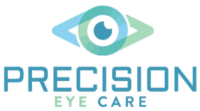Book Online
Previous
Next
Just choose the appointment type and time that work best for you, and you're on your way to clear, comfortable vision!


There is a lot of misinformation about crossed and lazy eyes. Eye turns CAN be treated without surgery and amblyopia (lazy eye) treatment has NO age limit. If you’ve been told that there’s nothing else that can be done, call us. We can help!
Just choose the appointment type and time that work best for you, and you're on your way to clear, comfortable vision!

Crossed eyes are a type of strabismus, which is an eye turn. Eyes can be turned in, out, up, or down. Turns can be constant or intermittent. Sometimes it’s the same eye that turns, and sometimes the eyes alternate. Any eye turn beyond the age of three months is abnormal.
“Lazy eye” is the layman’s term for amblyopia. Amblyopia is defined as unilateral (one-eye) or bilateral (two-eye) vision loss without ocular pathology. It is a brain condition where the brain is afraid of binocular vision: putting the information from the two eyes together to form an image of the world with depth perception. As a result, the brain shuts off input from an otherwise healthy eye, the eye becomes “lazy,” and the “lazy” eye cannot see well even with glasses. Amblyopia may occur when the following conditions are present:
There are many myths when it comes to crossed and lazy eyes.
Fact: Research performed by Krahe and Median, et al in 2005 showed that the brain retains its plasticity throughout the lifetime. Plasticity refers to its ability to establish new neural connections and reorganize after failure to develop normally or trauma. This means we can treat amblyopia and strabismus even in adulthood.
Fact: You can development stereopsis later in life even if you didn’t have it in infancy because the brain retains neural plasticity throughout life and is capable of neurogenesis (the ability to generate new neurons). Stereopsis is a learned skill. For a first hand account of someone who developed stereopsis as an adult, please read the book Fixing My Gaze: A Scientist’s Journey Into Seeing in Three Dimensions by Dr. Susan Barry.
Fact: Patching is actually counterproductive in treating amblyopia. Yes, you’ll get a temporary improvement after patching, but the vision in the amblyopic eye will degrade after you discontinue patching. Remember, the whole reason someone becomes amblyopic is because their brain is unable to cope with binocular vision. Therefore, to have a lasting effect, you have to treat the amblyopic eye under bi-ocular (two eyes are open at once, but are not fusing) and then binocular conditions. This can be achieved during vision therapy.
Fact: There is nothing wrong with the eye muscles – it’s a brain problem. The brain either doesn’t know how or doesn’t want to coordinate the eyes properly.
Fact: Surgery does not correct the underlying reason for the eye turn because, it’s a brain problem, not a muscle problem (see myth #4). Vision therapy solves the brain problem. Even Dr. David Hunter MD, a strabismus surgeon at Boston Children’s Hospital admits, “The surgery doesn’t correct the original defect that caused the brain to let the eyes wander in the first place, so the problem might come back years later.” and “about 10-20 percent of patients will need more surgery within 3-6 months of the first procedure.” So, before rushing off to surgery, consider …
Surgery:
| Monday - Thursday |
|
||
| Friday |
|
||
| Saturday | Closed | ||
| Sunday | Closed |
